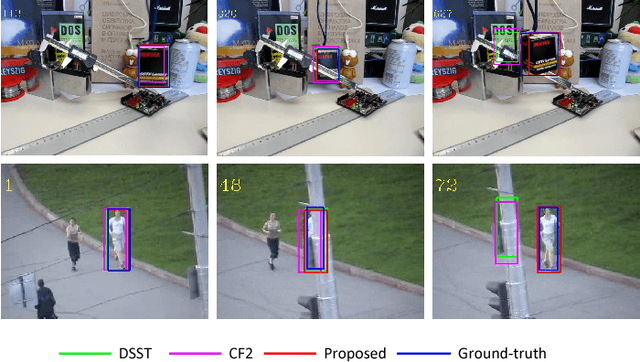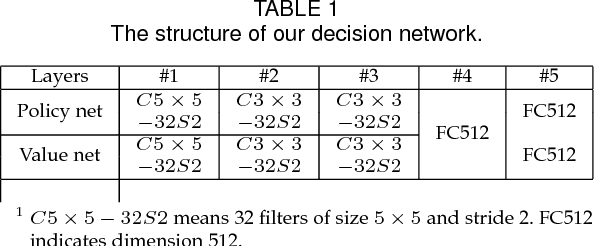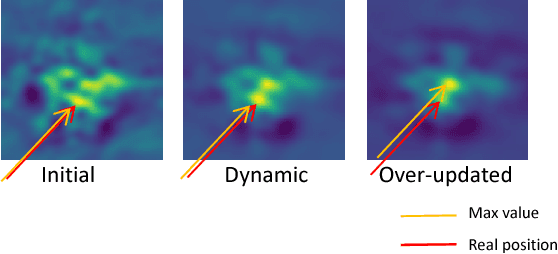Jeyarajan Thiyagalingam
CNN-based Classification Framework for Lung Tissues with Auxiliary Information
Jun 18, 2022



Abstract:Interstitial lung diseases are a large group of heterogeneous diseases characterized by different degrees of alveolitis and pulmonary fibrosis. Accurately diagnosing these diseases has significant guiding value for formulating treatment plans. Although previous work has produced impressive results in classifying interstitial lung diseases, there is still room for improving the accuracy of these techniques, mainly to enhance automated decision-making. In order to improve the classification precision, our study proposes a convolutional neural networks-based framework with auxiliary information. Firstly, ILD images are added with their medical information by re-scaling the original image in Hounsfield Units. Secondly, a modified CNN model is used to produce a vector of classification probability for each tissue. Thirdly, location information of the input image, consisting of the occurrence frequencies of different diseases in the CT scans on certain locations, is used to calculate a location weight vector. Finally, the Hadamard product between two vectors is used to produce a decision vector for the prediction. Compared to the state-of-the-art methods, the results using a publicly available ILD database show the potential of predicting these using different auxiliary information.
Machine Learning and Big Scientific Data
Oct 12, 2019



Abstract:This paper reviews some of the challenges posed by the huge growth of experimental data generated by the new generation of large-scale experiments at UK national facilities at the Rutherford Appleton Laboratory site at Harwell near Oxford. Such "Big Scientific Data" comes from the Diamond Light Source and Electron Microscopy Facilities, the ISIS Neutron and Muon Facility, and the UK's Central Laser Facility. Increasingly, scientists are now needing to use advanced machine learning and other AI technologies both to automate parts of the data pipeline and also to help find new scientific discoveries in the analysis of their data. For commercially important applications, such as object recognition, natural language processing and automatic translation, deep learning has made dramatic breakthroughs. Google's DeepMind has now also used deep learning technology to develop their AlphaFold tool to make predictions for protein folding. Remarkably, they have been able to achieve some spectacular results for this specific scientific problem. Can deep learning be similarly transformative for other scientific problems? After a brief review of some initial applications of machine learning at the Rutherford Appleton Laboratory, we focus on challenges and opportunities for AI in advancing materials science. Finally, we discuss the importance of developing some realistic machine learning benchmarks using Big Scientific Data coming from a number of different scientific domains. We conclude with some initial examples of our "SciML" benchmark suite and of the research challenges these benchmarks will enable.
Correlation Filter Selection for Visual Tracking Using Reinforcement Learning
Nov 08, 2018



Abstract:Correlation filter has been proven to be an effective tool for a number of approaches in visual tracking, particularly for seeking a good balance between tracking accuracy and speed. However, correlation filter based models are susceptible to wrong updates stemming from inaccurate tracking results. To date, little effort has been devoted towards handling the correlation filter update problem. In this paper, we propose a novel approach to address the correlation filter update problem. In our approach, we update and maintain multiple correlation filter models in parallel, and we use deep reinforcement learning for the selection of an optimal correlation filter model among them. To facilitate the decision process in an efficient manner, we propose a decision-net to deal target appearance modeling, which is trained through hundreds of challenging videos using proximal policy optimization and a lightweight learning network. An exhaustive evaluation of the proposed approach on the OTB100 and OTB2013 benchmarks show that the approach is effective enough to achieve the average success rate of 62.3% and the average precision score of 81.2%, both exceeding the performance of traditional correlation filter based trackers.
Real-time Pedestrian Surveillance with Top View Cumulative Grids
Feb 06, 2014



Abstract:This manuscript presents an efficient approach to map pedestrian surveillance footage to an aerial view for global assessment of features. The analysis of the footages relies on low level computer vision and enable real-time surveillance. While we neglect object tracking, we introduce cumulative grids on top view scene flow visualization to highlight situations of interest in the footage. Our approach is tested on multiview footage both from RGB cameras and, for the first time in the field, on RGB-D-sensors.
 Add to Chrome
Add to Chrome Add to Firefox
Add to Firefox Add to Edge
Add to Edge